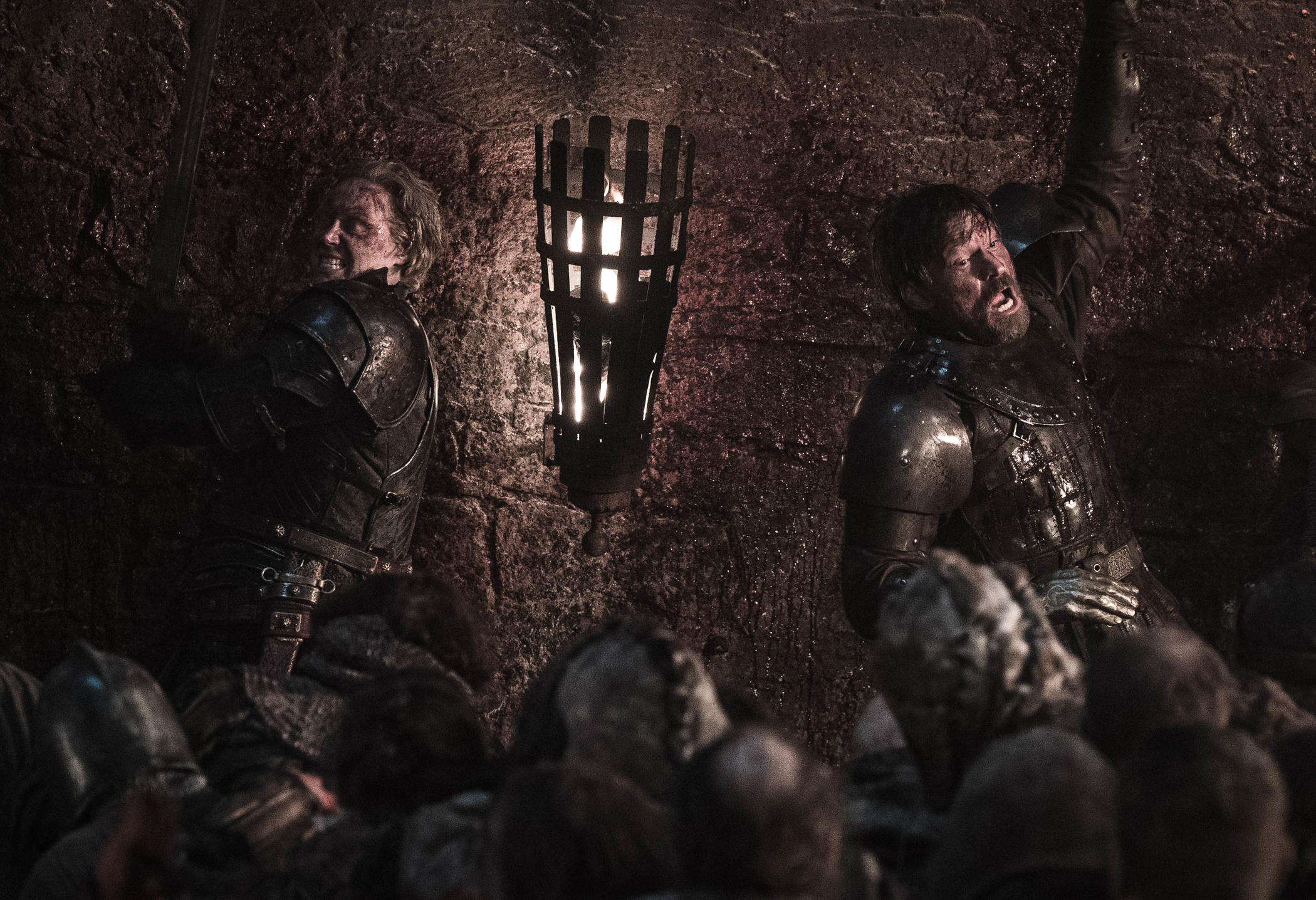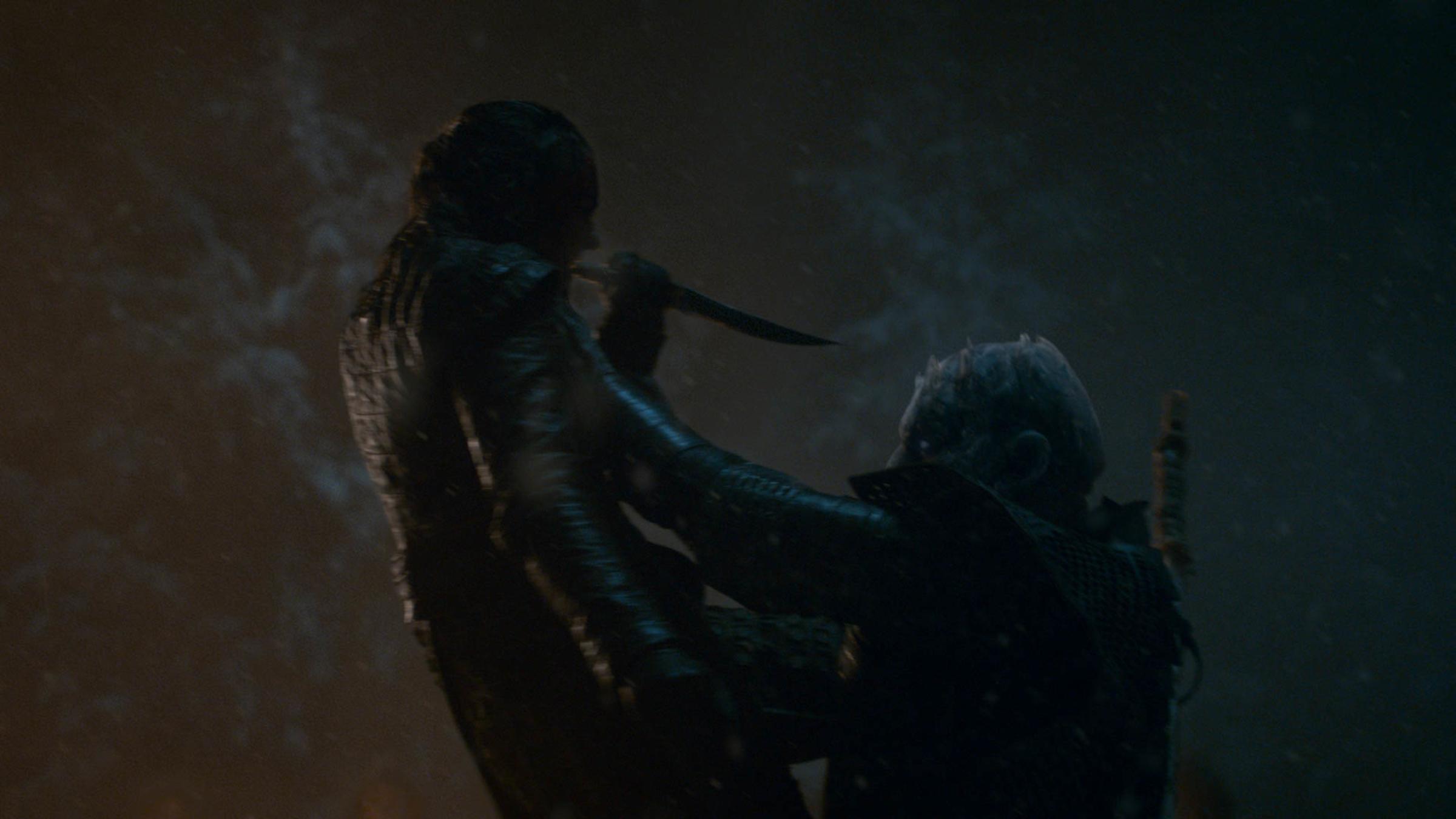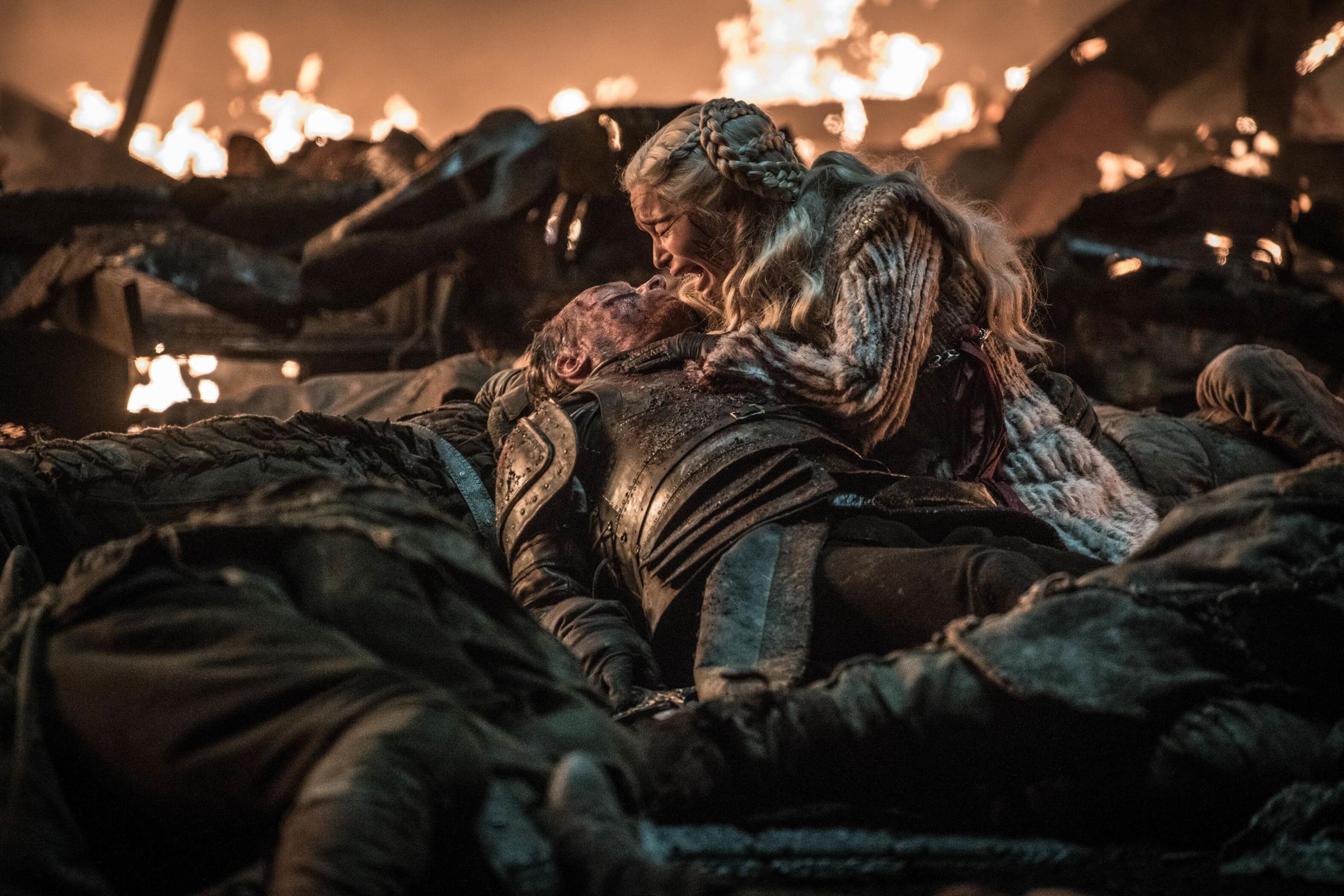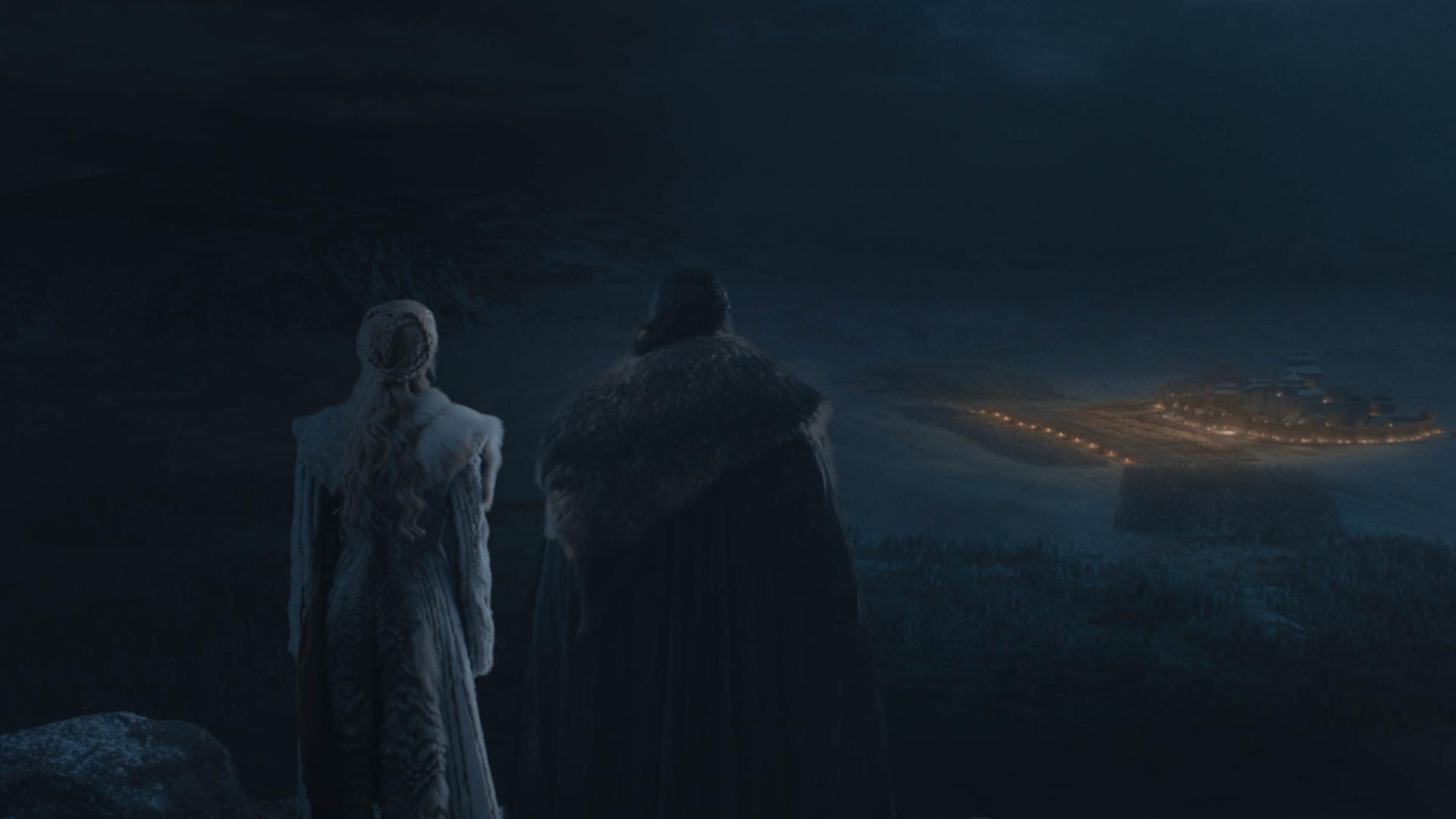Warning: This post contains spoilers for Game of Thrones season 8.
From the Battle of the Blackwater to the Battle of Castle Black to the Battle of the Bastards, Game of Thrones has a long history of producing legendary battle sequences. But leading up to the Battle of Winterfell, the final showdown between the living and the dead that took place in Game of Thrones season 8 episode 3, the show’s creators said it was going to be bigger and better than any other battle sequence that has ever been committed to film. In fact, it was reportedly the longest battle sequence in cinema history, according to EW. And if the fan reaction to Sunday’s episode is any indication, they made good on that promise.
“What we have asked the production team and crew to do this year truly has never been done in television or in a movie,” co-executive producer Bryan Cogman told Entertainment Weekly of the Battle of Winterfell. “This final face-off between the army of the dead and the army of the living is completely unprecedented and relentless and a mixture of genres even within the battle.”
But it wasn’t just the battle itself that was epic, it was also the expansive cast of Game of Thrones characters that played a role in the fight.
Here’s everything you need to know about the Battle of Winterfell.
What happened during the Battle of Winterfell?
Following an episode that seemed to set several beloved characters up to die, fans were both dreading and anxiously awaiting the Battle of Winterfell. At the end of Game of Thrones season 8 episode 2, women, children and non-fighters like Varys and Tyrion were ready to hole up in the Winterfell crypts to steer clear of the bloodshed. But due to the Night King’s ability to raise the dead, the crypts turned out to be one of the least safe places imaginable.
After Melisandre showed up with a fancy new incantation that allowed her to set the Dothrakis’ swords ablaze, warriors like Brienne, Jorah and Grey Worm led different factions of the Winterfell army into battle. But the situation quickly deteriorated when most of their soldiers were forced to retreat through the Winterfell gate to prevent an all-out slaughter.

Meanwhile, Bran spent the night hanging out in the godswood with Theon and the ironborn in hopes of luring the Night King into the open so Jon and Dany could rain dragonfire down on him. Unfortunately, that plan went to hell when Daenerys discovered that the Night King was immune to Drogon’s flames.
Fortunately, thanks to a nudge from Melisandre, Arya finally realized that it was she who was fated to kill the Night King. Just when it seemed all hope was lost, Arya came charging through the godswood and stabbed the leader of the White Walkers with her Valyrian steel dagger, causing the rest of his army — including undead Viserion — to fall alongside him.

But there were still some fan-favorite characters, including Theon, Jorah and Lyanna Mormont, who were lost along the way. For a

What’s the Battle of Winterfell about?
Fighting for your life can seem like a constant on a show filled with death and destruction. But this conflict wasn’t just any fight: this was the final battle for survival. In season 7, Jon Snow (Kit Harington) proved to Daenerys Targaryen (Emilia Clarke) that instead of everyone fighting each other for the Iron Throne, the armies of Westeros needed to band together and fend off the fast-approaching White Walkers. Essentially, it was everybody (well, most of the good guys) vs. the Night King and the Army of the Dead — all in one massive action sequence. After nearly 70 episodes of buildup, winter was most definitely here.

Why was the Battle of Winterfell so significant?
We’d probably be naïve to assume the Battle of Winterfell is the only large-scale conflict the final season has in store. But this skirmish had the highest stakes to date since most of the cast was fighting for their lives. After all, Game of Thrones had been building up to this final face-off for years.
The Thrones creators promised it would rival what is often considered to be the longest consecutive battle ever filmed: the Battle of Helm’s Deep from Lord of the Rings: The Two Towers (2002), which clocked in at a whopping 40 minutes. In the words of Peter Dinklage, who plays Tyrion Lannister, this final confrontation is going to make season 6’s Battle of the Bastards “look like a theme park.”
Here’s a glimpse of Helm’s Deep in case you missed it.
Blowing all of the other big battles out of the water was a grueling process for everyone involved. Filming the Battle of Winterfell took eleven weeks of shooting at night, requiring plenty of stamina from the hundreds of people involved in the lengthy sequence.
“The temperatures are freezing in the low 30s; they’re laboring in icy rain and piercing wind, thick, ankle-deep mud; reeking horse manure and choking smoke,” Entertainment Weekly reported of the undertaking dubbed “The Long Night.” Miguel Sapochnik, who previously helmed the “Hardhome” and “Battle of Bastards” episodes, directed this one as well.
Which characters were involved in the Battle of Winterfell?
“The [Game of Thrones battles] I’ve done previously were generally from Jon’s perspective,” Sapochnik told Entertainment Weekly. “Here I’ve got 20-some cast members and everyone would like it to be their scene. That’s complicated because I find the best battle sequences are when you have a strong point of view. I keep thinking: ‘Whose story am I telling right now?’”
Here’s a list of everyone who was involved in the Battle of Winterfell: Jon Snow (Kit Harington), Daenerys Targaryen (Emilia Clarke), Tyrion Lannister (Peter Dinklage), Sansa Stark (Sophie Turner), Arya Stark (Maisie Williams), Bran Stark (Isaac Hempstead Wright), Theon Greyjoy (Alfie Allen), Brienne of Tarth (Gwendoline Christie), Jaime Lannister (Nikolaj Coster-Waldau), Podrick Payne (Daniel Portman), Gendry (Joe Dempsie), Tormund Giantsbane (Kristofer Hivju) Davos Seaworth (Liam Cunningham), Melisandre (Carice van Houten), Grey Worm (Jacob Anderson), Missandei (Nathalie Emmanuel), Dolorous Edd (Ben Crompton), Samwell Tarly (John Bradley), Gilly (Hannah Murray), Varys (Conleth Hill), Jorah Mormont (Iain Glen), Lyanna Mormont (Bella Ramsey) Sandor “The Hound” Clegane (Rory McCann), Beric Dondarrion (Richard Dormer) and, of course, the Night King (Vladimír Furdík).
Who fought whom?
The Westeros players named above — and their armies — joined forces to defend themselves against the Night King’s invasion. So, basically, everyone who the King in the North and the Dragon Queen convinced to join their fight was battling the White Walkers. The Night King also had undead Viserion.
Any popular Battle of Winterfell theories you should know about?
It was logical that the Night King and the White Walkers would encounter Winterfell on their way south after they got past the Wall. But one popular theory suggested the Night King could have a different endgame in mind. A redditor posited that the Night King could strategically send the White Walkers to descend upon Winterfell as a diversion while he swooped down to the heavily populated King’s Landing to take down Cersei and the Golden Company. With Cersei dealt with, the Night King would have even more wights to double back up to easily defeat Winterfell and our heroes. That kind of stealth move seemed like it could have been right up the Night King’s frosty alley, but obviously did not play out.
More Must-Reads from TIME
- Cybersecurity Experts Are Sounding the Alarm on DOGE
- Meet the 2025 Women of the Year
- The Harsh Truth About Disability Inclusion
- Why Do More Young Adults Have Cancer?
- Colman Domingo Leads With Radical Love
- How to Get Better at Doing Things Alone
- Michelle Zauner Stares Down the Darkness
Write to Megan McCluskey at megan.mccluskey@time.com



